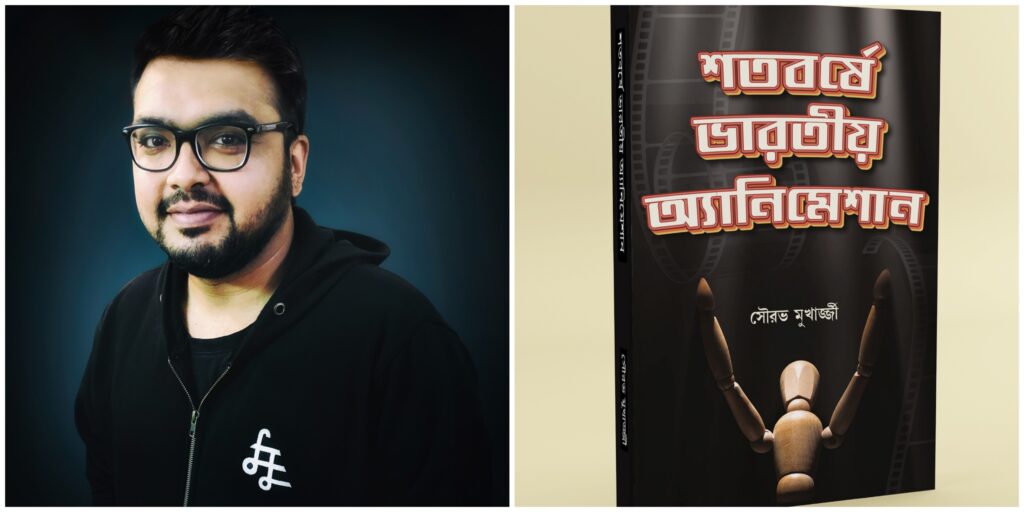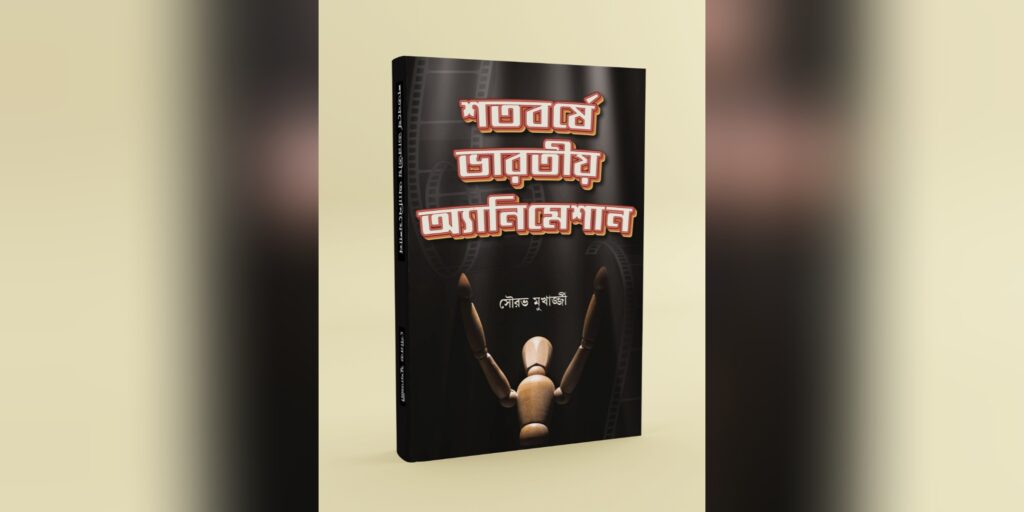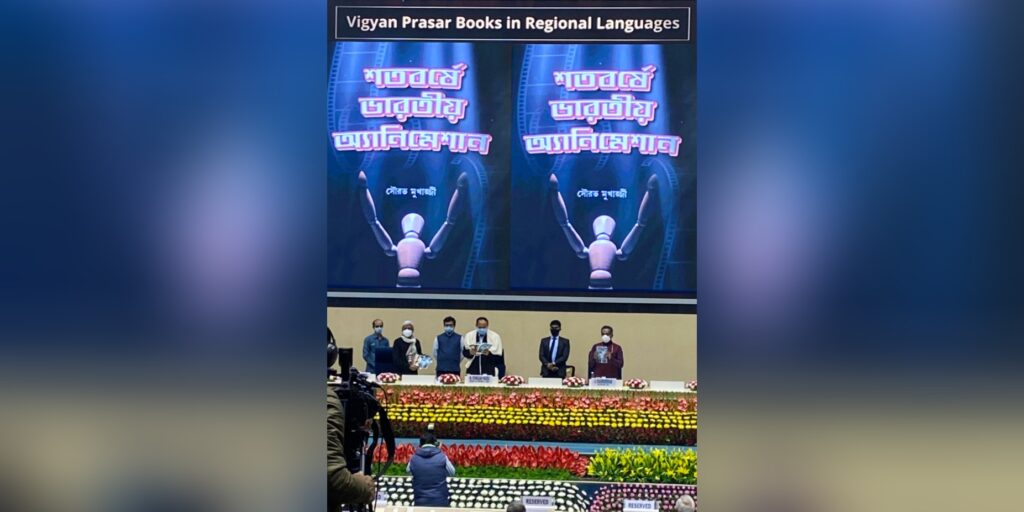
The vice president of India and Rajya Sabha chairman M Venkaiah Naidu recently launched a book named Sotoborshe Bharityo Animation (100 years of Indian Animation) which speaks about how Indian animation transformed over the years through various socio-political and socio-economical influences. The book is authored by Hindustan Times deputy manager Sourav Mukerjee, who wanted to make millions of Bengali students understand animation as a medium and India’s efforts and contributions behind it. Vigyan Prasar, a unit of the Ministry of Science and Technology, Government of India had shortlisted Mukherjee’s research amongst hundreds of research papers and finalized it for publication.
Speaking about his debut book, Mukerjee told AnimationXpress, “Sotoborshe Bharityo Animation is not only a teleological history of Indian animation but actually talks about how Indian animation has transformed over the years through various socio-political and socio-economical influences. This is the first of its kind book on Indian Animation in the Bengali language. I believe that animation is not only a sheer medium of entertainment, but like literature, art, and cinema, it also is a true reflection of society.”
The book comprises six chapters that throw light on Indian animation in the early pre-independence era, post-independence socialist era, the first wave of Indian animation, and lastly, globalization and the second wave of Indian animation. Sharing the idea behind the book, Mukherjee elaborated, “Being a student of media and animation, while studying I found it ridiculous that there is not even a single book on animation in Bengali, so I made it my mission that whenever I am going to write my first book, it will be on animation and that too in my mother tongue – Bengali so that hundreds and millions of students from the Bengali vernacular medium get to know about this beautiful medium of animation and India’s brilliant efforts and contributions behind it.”

It took around four years of research and an additional three months to complete the book. The 100 pages long book highlights the early era of Indian animation, the experiments done by the father of Indian cinema Dada Saheb Phalke, and other pioneers of early Indian animation. It also talks about how the socialist government bodies used animation as the mode of mass communication and mention the first new wave of Indian animation where legends like Ram Mohan and Bhimsen Khurana started experimenting with this medium and took it to the next level and how globalization affected the Indian animation industry, the birth of CGI, and the transformation of Indian digital animation, and emerging technologies like AR, VR and their impact on this medium.
Talking about the research process while working on this book, Mukerjee narrated, “The idea of this book started with my Master’s dissertation project and then it became an addiction. As I already mentioned, there are very few research references available in print or digital, the first and only source was IDC Bombay, a unit of the Indian Institute of Technology. So, I went there, and fortunately, with the help of a few seniors and batchmates, I got an opportunity to check their archives. Though the IDC research materials helped me a lot, it was still not enough, so I rushed to the Film Archive, Pune to get the pre-independence footages and documents which I needed the most, to begin with writing my first chapter. Once the first chapter was ready, things got streamlined and after dedicated four years of hard work, here we are with the final book.”
He further added, “Even when the final draft was ready, I couldn’t get a mainstream publisher to publish my book as they thought – ‘it was too niche to be published’. Here, Bichitra Pathshala, an organization with a motto to bring cinema into the classrooms to make our learning experience more joyful, came to my rescue. Bichitra Pathshala secretary Subha Das Mollick connected me with Vigyan Prasar, a unit of the Ministry of Science and Technology, Government of India. They shortlisted my research amongst hundreds of research papers and finalized it for publication. I am so grateful that on the occasion of the 75th Azadi ka Amrit Mahotsav, my book was launched by the vice president of India M. Venkaiah Naidu ji at Vigyan Bhavan, New Delhi on 22 December 2021.”

Revealing his future plans, Mukerjee commented, “While writing this book, it dawned upon me that not only in Bengali, there is very little research on Indian animation and that might be a reason it is still not a mainstream subject in our education system. My core objective will be breaking this barrier and clearing out the misconception that animation is not only all about a medium to make cartoons for children. It has a huge potential to become a mainstream medium and India being one of the most youth-driven countries of the world can become the master of world animation in the days to come.”

